Special Analysis Rules in Basement Structures as per TBDY 2018
Modal Response Spectrum Analysis
Modal Response Spectrum Analysis is chosen for the building in accordance with Table 4.4 of TBDY 2018. The building can not be analysed with Equivalent Lateral Force Procedure.
Since the building has basement storys, it is difficult to provide sufficient mode numbers, the mass participation rate of 95%, to be taken into consideration in the Modal Response Spectrum Analysis for the entire upper section above the rigid basement walls and the lower section containing the basement floors. For this reason, in TBDY 2018 4.8.5.1, two stage analysis is done with modal analysis.
In this method, the upper part of the building and the lower part with basement are modeled together as a common structural system and two stage analysis is done. In both load cases, a mass participation ratio of 95% should be achieved.
There are two stages in the analysis of the upper section and the basement floors, as the structural system is flat slabs with special shearwalls. The first stage is the hinged modeling of the columns from the lower and upper ends, and the second stage is the monolithic modeling of the structural elements.
In addition, 4 modal analyzes are performed for each stage, since the accidental torsion is resolved with the dynamic method in the program.
In accordance with TBDY 2018 4.5.10.4 article, it is applied in a full rigid solution to determine accidental torsion in slabs with semi-rigid diaphragm adopted as a shell.
Due to all seismic code requirements listed above, a total of 20 modal analyzes are made for this building and the internal forces to be used for the design are determined.
Upper Section Analysis (First Stage)
In the first load model, a common structural system model is established, that is, the entire structure is modeled. The masses of the basements are taken as '0' and their stiffness is used in the mathematical model, while both the mass and stiffness of the basement floors are included in the mathematical model. As a result of this analysis, internal forces are obtained in both the upper section and the basement floor elements.
First of all, the item summaries of the analyzes made with the symbols used by the program are explained in the table below.

The following table summarizes the dynamic analysis results for the upper section obtained from the monolithic model of frame columns.
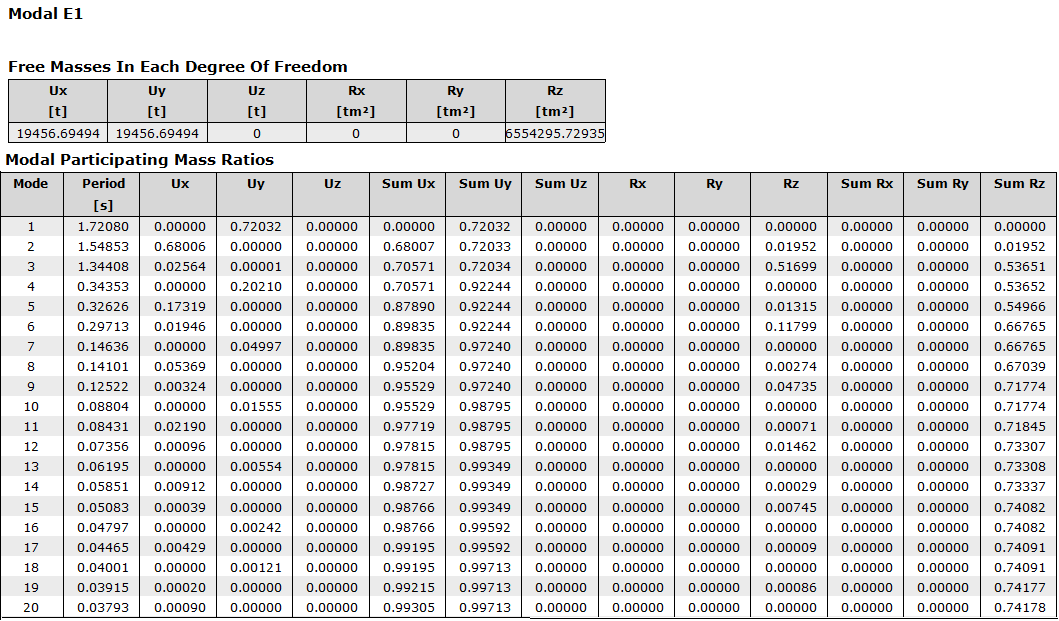
Scaling of the Internal Forces and Displacements Made with Modal Response Spectrum Analysis According to Equivalent Lateral Force Procedure
According to TBDY 4.8.4, total seismic load obtained by modal combination method in any direction cannot be less than the total equivalent lateral force calculated by the equivalent lateral force procedure. If it is less, the equivalent base shear force is increased by the magnification factor.
For this calculation, first of all, the maximum value of the dominant vibration period Tp obtained from the mathematical model can not be more than 1.4 times the TpA determined by TBDY 2018 Equation 4.27.

In buildings where all seismic loads are covered by reinforced concrete walls, Ct is calculated with the following equation. Shearwall net areas are used in this calculation.
The calculation below has been made manually for the X direction and compared with the program outputs for the sake of example.



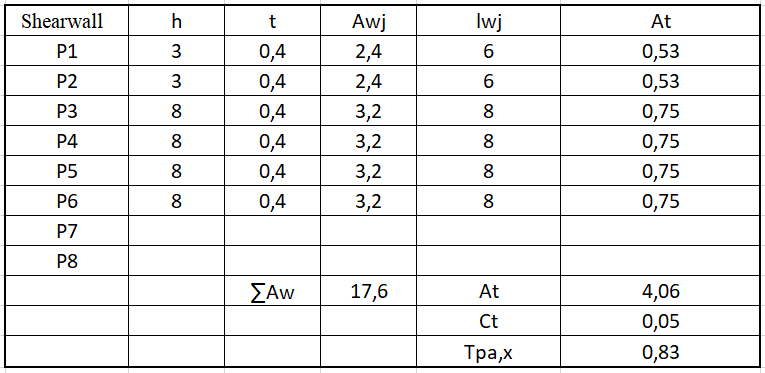

The manual calculation above is done automatically by the program and the dynamic analysis report is detailed in the entry section. The table below is obtained from the dynamic analysis report for the X direction.
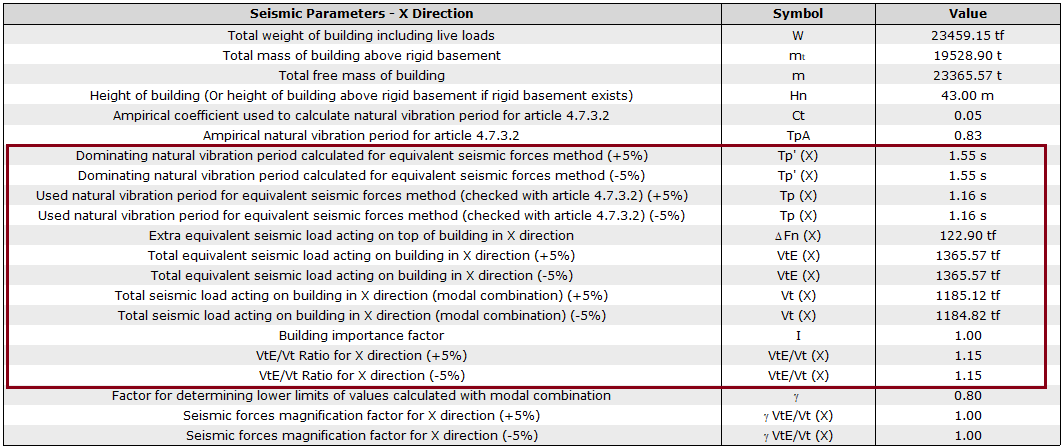
The base shear force of the structure is determined after the period to be used in determining the equivalent lateral force is determined. How the equivalent lateral force is determined is described in TBDY 2018 4.7.2. The base shear force obtained using the equations here is compared with modal total seismic load obtained by the program and the coefficient of increase is calculated according to the following equation.

The E coefficient was used as 0.80 due to the absence of irregularities in the building.
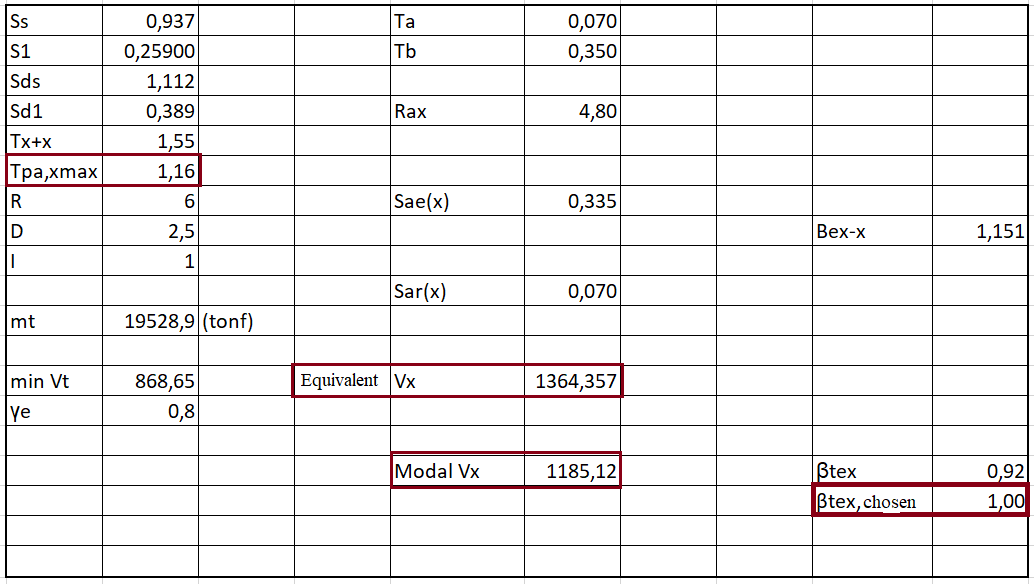
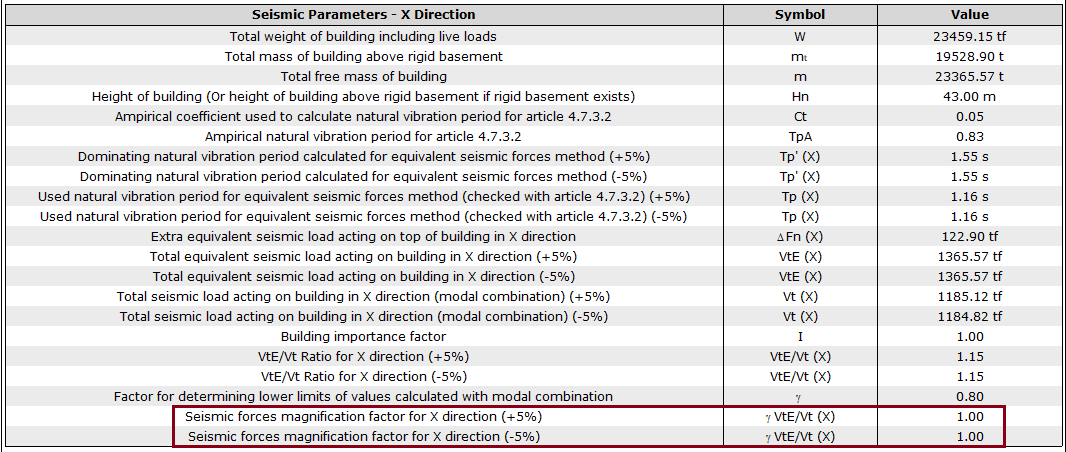
Second Stage (Sub Section - Analysis of Basement Floors)
In the second load case of the calculation, only the masses of the sub-section are taken into consideration in the common single structural system model. The stiffness of both the upper and lower section is included in the mathematical model. As a result of this analysis, the minimum mass participation ratio of 95% must be achieved.
At this stage, analysis consisting of two stages is carried out in which the columns are hinged and monolithic models due to the flat slab systems.


Comparison with equivalent lateral force procedure in basement floors is not made in accordance with the code.
